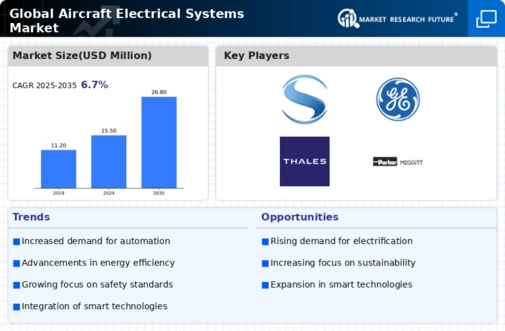Aircraft Electrical Systems Size
Aircraft Electrical Systems Market Growth Projections and Opportunities
Battery management systems are important electronic devices used to control and monitor the charging and discharging of rechargeable batteries. They are widely used in various applications such as grid energy storage, specialty vehicles (like marine and robots), and telecom/datacom systems. These systems can be customized to meet the specific requirements of different applications. The global power battery management system market is experiencing significant growth due to changes in government regulations and an increasing focus on reducing global dependence on coal and other fossil fuels. Environmental sustainability is a major driver for this growth, as well as the growing adoption of electric and hybrid vehicles. Various incentives and tax benefits are provided to encourage the local manufacturing of hybrid and electric vehicles, further boosting the market. Additionally, there is a growing demand for off-grid renewable energy generation, driven by government support and efforts to improve living conditions in rural areas. However, there are some challenges that may hinder the growth of the global power battery management systems market. These include the high maintenance costs associated with these systems and a lack of technical knowledge regarding their installation. Despite the challenges, the global power battery management system market is expected to grow rapidly in the coming years. Analysts predict that the market will reach a value of over USD 6,944.2 million by 2023, with an estimated compound annual growth rate (CAGR) of 11.86% during the forecast period. The growth of the power battery management system market is driven by several factors. One of the key factors is the increasing awareness and concern for the environment. Governments around the world are implementing regulations and policies to reduce the dependence on coal and other fossil fuels, which contributes to global warming and climate change. As a result, there is a growing demand for alternative energy sources and energy storage solutions, such as battery systems.








Leave a Comment